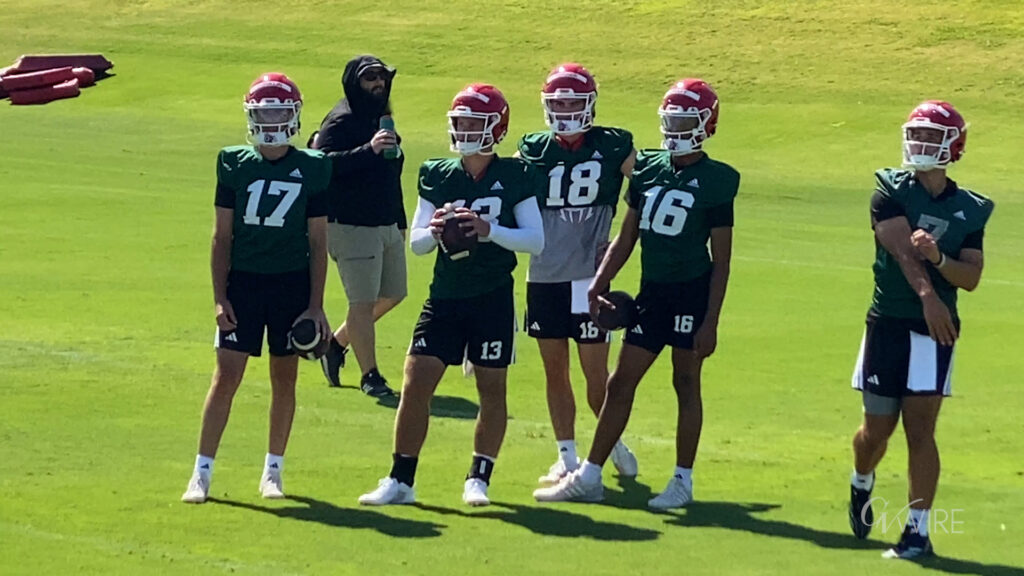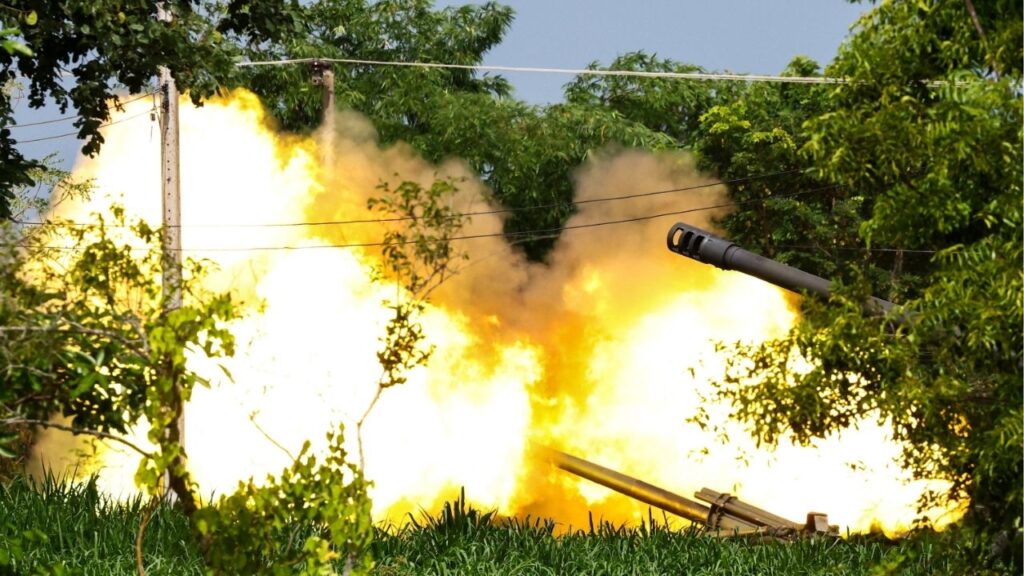Share
While boasting about how California — and he — have handled the COVID-19 pandemic in his State of the State address this month, Gov. Gavin Newsom virtually ignored its severe economic impacts, offering only this tepid statement:
“California has the most innovation, venture capital, and small-business investment in this country. We will keep fostering every small entrepreneur — the drivers of our GDP.”
From a purely political standpoint, Newsom’s omission made perfect sense. The speech was obviously aimed at countering a pending recall campaign and one of the recall’s chief drivers is economic pain.

Dan Walters
Opinion
California’s Employment Picture Relatively Grim
To counter COVID-19, Newsom ordered widespread shutdowns of businesses, particularly small service businesses such as restaurants, thus forcing layoffs of employees — as many as 2 million at one point. There’s been some recovery as restrictions were lifted or modified but California’s employment picture remains relatively grim.
A few days after Newsom’s speech, the state Employment Development Department underscored that fact in a report about what employment conditions were like in January, to wit:
—The state’s unemployment rate was 9%, twice as high as it had been a year earlier. It’s also the nation’s second highest rate behind Hawaii’s 10.2% and nearly 50% higher than the national rate of 6.2%.
—Over that year, employment dropped more than 10% from 17.6 million jobs to 15.9 million.
—Roughly half of the Californians who lost those 1.7 million jobs are on the unemployment rolls and collecting state and federal unemployment insurance benefits. The others stopped looking for work and left the labor force.
—The employment disparities within the state remained immense, with jobless rates ranging from 5.4% in Marin County to 16.5% in Imperial. Los Angeles County, which contains a quarter of the state’s population, had the second highest rate at 12.7%.
“As it turns out, the labor market fallout in 2020 was significantly worse in California than originally estimated,” said Taner Osman, research manager at Beacon Economics. “And it hasn’t made the reading any prettier.”
Unemployment Rate Will be Issue in Recall Campaign
To counter COVID-19, Newsom ordered widespread shutdowns of businesses, particularly small service businesses such as restaurants, thus forcing layoffs of employees — as many as 2 million at one point. There’s been some recovery as restrictions were lifted or modified but California’s employment picture remains relatively grim.
A few days after Newsom’s speech, the state Employment Development Department underscored that fact in a report about what employment conditions were like in January, to wit:
—The state’s unemployment rate was 9%, twice as high as it had been a year earlier. It’s also the nation’s second highest rate behind Hawaii’s 10.2% and nearly 50% higher than the national rate of 6.2%.
—Over that year, employment dropped more than 10% from 17.6 million jobs to 15.9 million.
—Roughly half of the Californians who lost those 1.7 million jobs are on the unemployment rolls and collecting state and federal unemployment insurance benefits. The others stopped looking for work and left the labor force.
—The employment disparities within the state remained immense, with jobless rates ranging from 5.4% in Marin County to 16.5% in Imperial. Los Angeles County, which contains a quarter of the state’s population, had the second highest rate at 12.7%.
“As it turns out, the labor market fallout in 2020 was significantly worse in California than originally estimated,” said Taner Osman, research manager at Beacon Economics. “And it hasn’t made the reading any prettier.”
California’s very high unemployment rate vis-à-vis those of the nation as a whole and other comparable states will certainly be an issue in the recall campaign.
Newsom likely will argue that the business shutdowns were necessary to lower infection rates, but his critics will say that states that imposed fewer restrictions didn’t see markedly higher rates.
The Associated Press compared California and its tight restrictions to Florida, which imposed relatively few mandates under Republican Gov. Ron DeSantis and concluded: “Despite their differing approaches, California and Florida have experienced almost identical outcomes in COVID-19 case rates.”
Florida’s unemployment rate in January was 4.8%, scarcely half of California’s.
While recent polls show declines in Newsom’s popularity, he still is widely favored to beat the recall if, as expected, it qualifies for the ballot. However, his fate will hinge on Californians’ mood when the recall election occurs and that mood, in turn, may hinge on whether the state’s economy has improved markedly.
UCLA’s Anderson Forecast sees a strong recovery, saying, “A waning pandemic combined with fiscal relief means a strong year of growth in 2021 — one of the strongest years of growth in the last 60 years — followed by sustained higher growth rates in 2022 and 2023.
Newsom’s own economic staff is more cautious. H.D. Palmer, a spokesman for Newsom’s Department of Finance, said, “It is going to take us at least two years, if not longer, for us to get back to prepandemic employment levels.”
For his own sake, Newsom had better hope that Anderson’s forecast more closely matches the ensuing reality.
Newsom likely will argue that the business shutdowns were necessary to lower infection rates, but his critics will say that states that imposed fewer restrictions didn’t see markedly higher rates.
The Associated Press compared California and its tight restrictions to Florida, which imposed relatively few mandates under Republican Gov. Ron DeSantis and concluded: “Despite their differing approaches, California and Florida have experienced almost identical outcomes in COVID-19 case rates.”
Florida’s unemployment rate in January was 4.8%, scarcely half of California’s.
While recent polls show declines in Newsom’s popularity, he still is widely favored to beat the recall if, as expected, it qualifies for the ballot. However, his fate will hinge on Californians’ mood when the recall election occurs and that mood, in turn, may hinge on whether the state’s economy has improved markedly.
UCLA’s Anderson Forecast sees a strong recovery, saying, “A waning pandemic combined with fiscal relief means a strong year of growth in 2021 — one of the strongest years of growth in the last 60 years — followed by sustained higher growth rates in 2022 and 2023.
Two Year Long Recovery Likely
Newsom’s own economic staff is more cautious. H.D. Palmer, a spokesman for Newsom’s Department of Finance, said, “It is going to take us at least two years, if not longer, for us to get back to prepandemic employment levels.”
For his own sake, Newsom had better hope that Anderson’s forecast more closely matches the ensuing reality.
CalMatters is a public interest journalism venture committed to explaining how California’s state Capitol works and why it matters. For more stories by Dan Walters, go to calmatters.org/commentary.
[activecampaign form=19]RELATED TOPICS:
Israeli Minister Hints at Annexing Parts of Gaza
25 minutes ago
Russia Has Developed Immunity to Sanctions, Kremlin Says After Trump Tightens Ceasefire Deadline
29 minutes ago
Fed Likely to Hold Rates Steady Despite Trump’s Push for Big Cuts
31 minutes ago
California Under Tsunami Advisory After Magnitude 8.7 Earthquake
15 hours ago
Fresno Man Dies in DUI Crash, Driver Arrested
15 hours ago
Watch Twin Meteor Showers Reach Their Simultaneous Peak in Summer Skies
16 hours ago
New York Gunman Was Flagged by Security Camera System Before Attack, Sources Say
17 hours ago
US House Panel Rejects Immunity Request by Epstein Associate Maxwell
18 hours ago
White House Set to Unveil Closely Watched Crypto Policy Report
2 minutes ago
Categories

White House Set to Unveil Closely Watched Crypto Policy Report

Protein Bar Arms Race Is Waged on Store Shelves and Social Media

Israeli Minister Hints at Annexing Parts of Gaza

Russia Has Developed Immunity to Sanctions, Kremlin Says After Trump Tightens Ceasefire Deadline

Fed Likely to Hold Rates Steady Despite Trump’s Push for Big Cuts

California Under Tsunami Advisory After Magnitude 8.7 Earthquake












